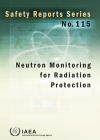The development of the nuclear industry and the more widespread application of radiation and nuclear technologies have led to a steady increase of the number of workers who might be exposed to radiation in the course of their work.
Workers
According to a 2008 report by the United Nations Scientific Committee on the Effects of Atomic Radiation, some 23 million workers worldwide are exposed occupationally to ionizing radiation. Of these, about 13 million work in occupations that involve natural sources of radiation and 10 million in occupations that involve exposure to man-made source of radiation. While their exposure is mostly a consequence of the normal operation of the facilities they work in, they may occasionally also be subject to an over-exposure as a result of an accident.
Workers can be exposed either to artificial radiation or naturally occurring radioactive material. To protect them against such an exposure, some concrete steps can be taken. These include regular monitoring, protective equipment, or countermeasures such as shielding. Training, information exchange and consistent health surveillance are also important factors for an efficient occupational radiation protection regime. Any of these responsibilities must clearly be assigned to either the worker, his contractor or employer, or the operator of the facility.
The IAEA has a programme focusing specifically on occupational radiation protection. It promotes an internationally harmonized approach to the issue and develops safety standards and guidelines to reduce radiation exposure at the workplace. It also helps Member States apply these standards and guidelines in practice.
In 2014, the IAEA developed with several other international organizations the Occupational Radiation Protection Call-for-Action. This comprises nine key areas that require global attention in the field of radiation protection of workers. These actions are essential for the safe use of ionizing radiation.








